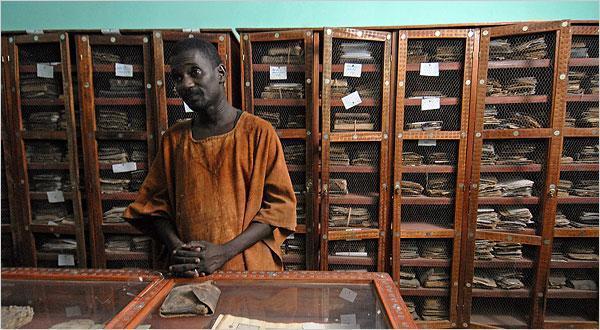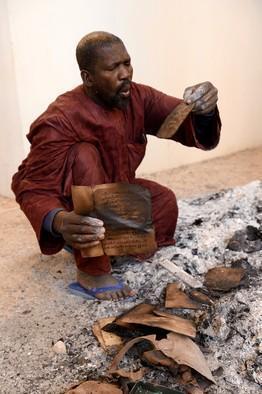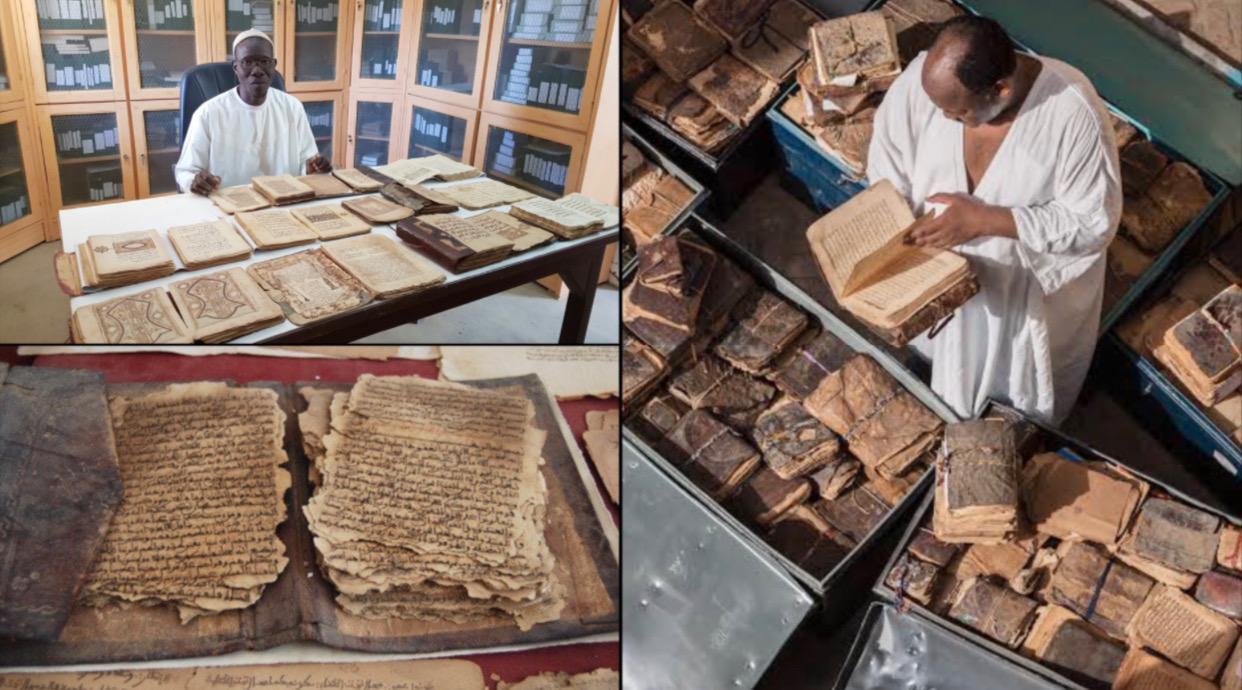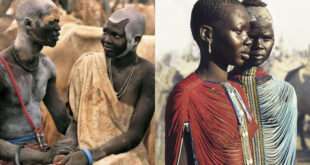Many writers on African history did not believe until recently that African societies had any sort of tradition of writing. This idea has gradually lost recognition since the rediscovery of ancient collections of manuscripts, some dating back to at least the 8th century A.D.
In present-day Ethiopia, about 250,000 old manuscripts from the Timbuktu libraries survive. Also, at the southern Egyptian site of Qasr Ibrim, thousands of documents from the medieval Sudanese empire of Makuria, written in at least eight different languages have been dug out. In the western African cities of Chinguetti, Walata, Oudane, Kano, and Agadez, thousands of more ancient manuscripts have survived similarly.
Approximately 1 million manuscripts have since managed to survive from the northern edges of Guinea and Ghana to the shores of the Mediterranean, against the real and present dangers posed by fires, insects, and plundering. National Geographic also predicts 700,000 manuscripts in the city of Timbuktu alone have survived.

Local families and institutions still own and maintain over 60 libraries in Timbuktu, some of which are collections that survived the turmoil through the city, as well as the ravages of nature. The Ahmed Baba Institute, established in 1979 and named after the famous scholar of the 16th/17th century, considered the greatest in Africa, is a true example of this.

Today, the institute has only about thirty thousand manuscripts, which are constantly being examined, cataloged and stored, but at the time of the French colonial administration of Timbuktu (1894-1959), many of the manuscripts were taken by the occupying colonialists and brought to light. As a result, many families there are still refusing to allow researchers entry, anticipating a repeat of the French treatment. Many texts were lost due to climatic effects including drought, which forced many people to bury them and evacuate.
Of the surviving manuscripts, these are:
* Main Islamic texts include Korans, hadith collections (actions or prophet’s sayings), Sufi texts and devotional texts
* Activities of the islamic law school in Maliki
* ‘Muslim science’ texts, including grammar, mathematics and astronomy
* Historical works from the area, including contracts, commentaries, historical chronicles, poetry, and marginal notes and jottings, proving to be a remarkably rich source of historical evidence.
Of whatever reason, much of the manuscripts themselves are of great interest to the owners. For example, those who have so far claimed royalty have been found to be from the servile class because of the manuscripts’ evidence.
Certain documents also exposed one family’s atrocious relations with another, which may have occurred a very long time ago but still have meaning to this day. As in contested ownership of land and properties.
These raise the question as to why to this day these manuscripts are of utmost importance. Many of those in possession of the manuscripts hid them during colonial times, or even had them buried.
In addition, French was forcibly introduced as the region’s language and instruction, meaning that many owners lost their ability to read and understand the manuscripts in the languages they were originally written in.
Eventually, it wasn’t until 1985 that much energy was breathed into this region’s academic life , meaning it would take a long time to fully understand the full scope and import of the manuscripts that were found.
 The African History Truly African
The African History Truly African

